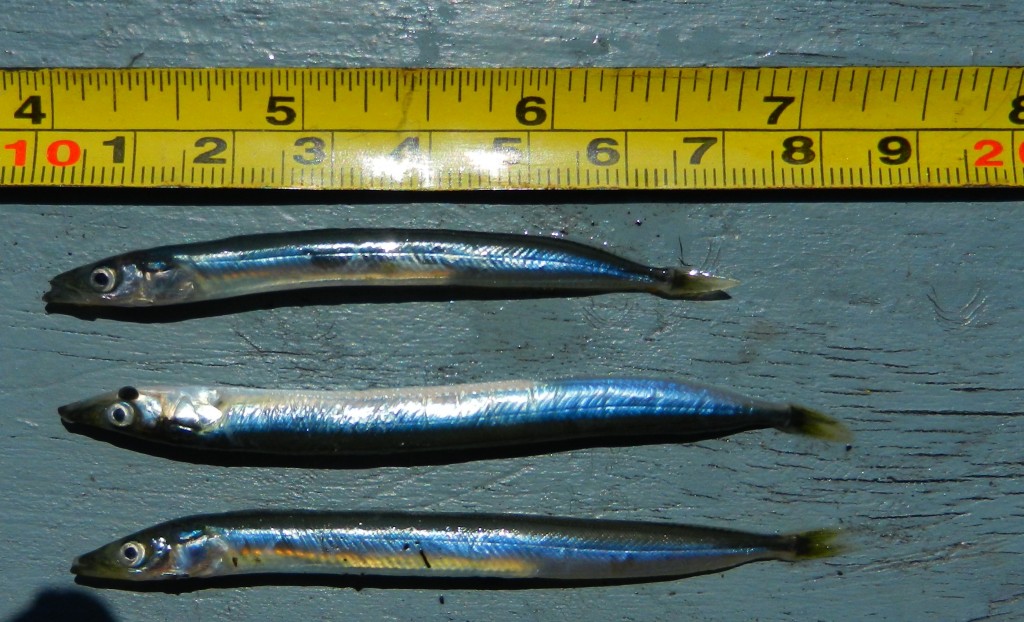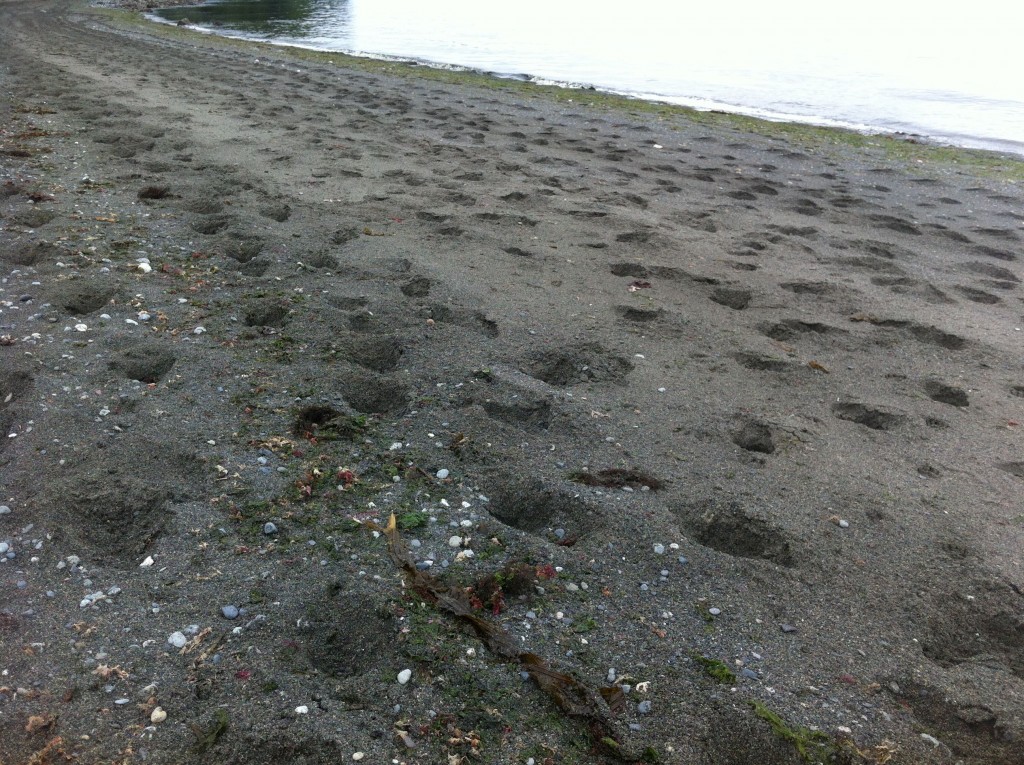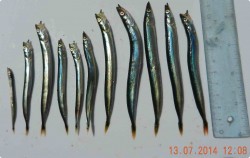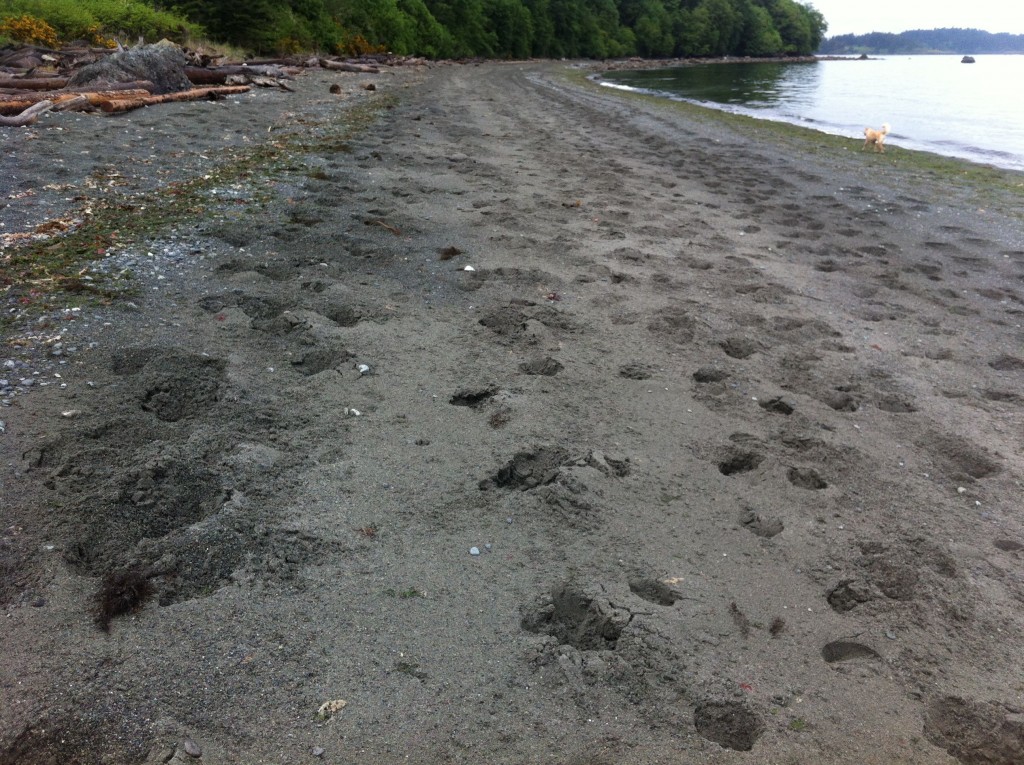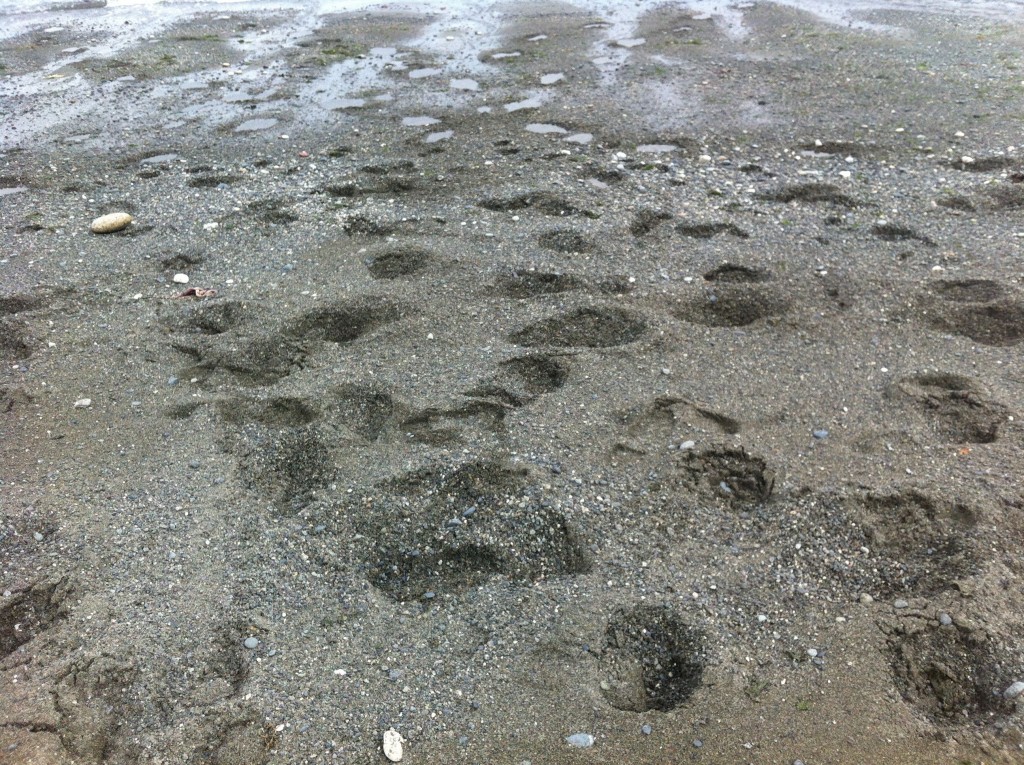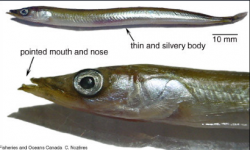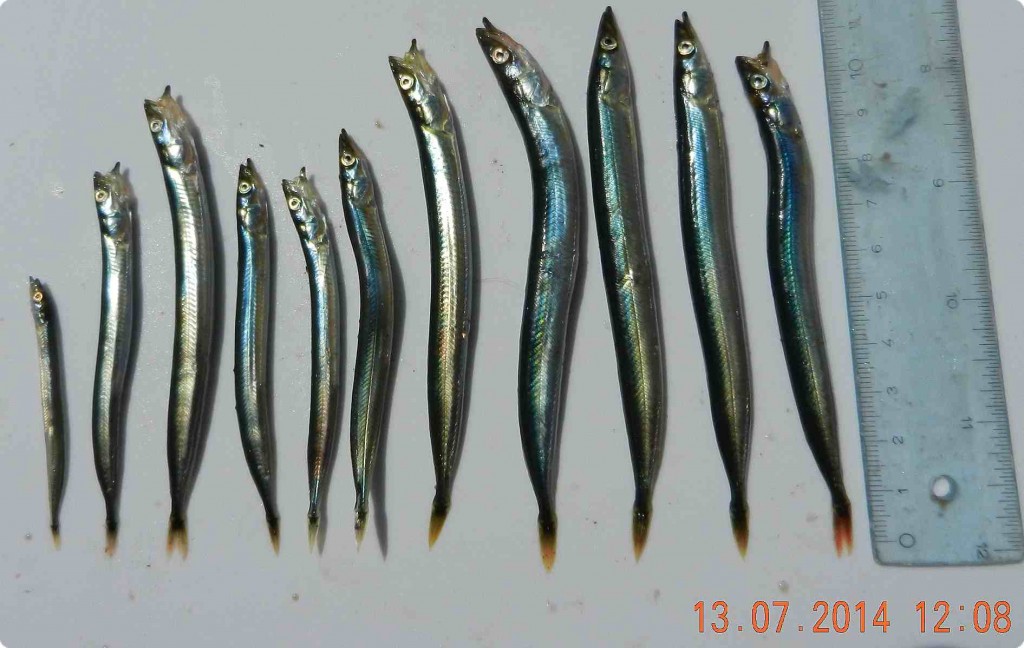
Sand lance and ruler in centimetres
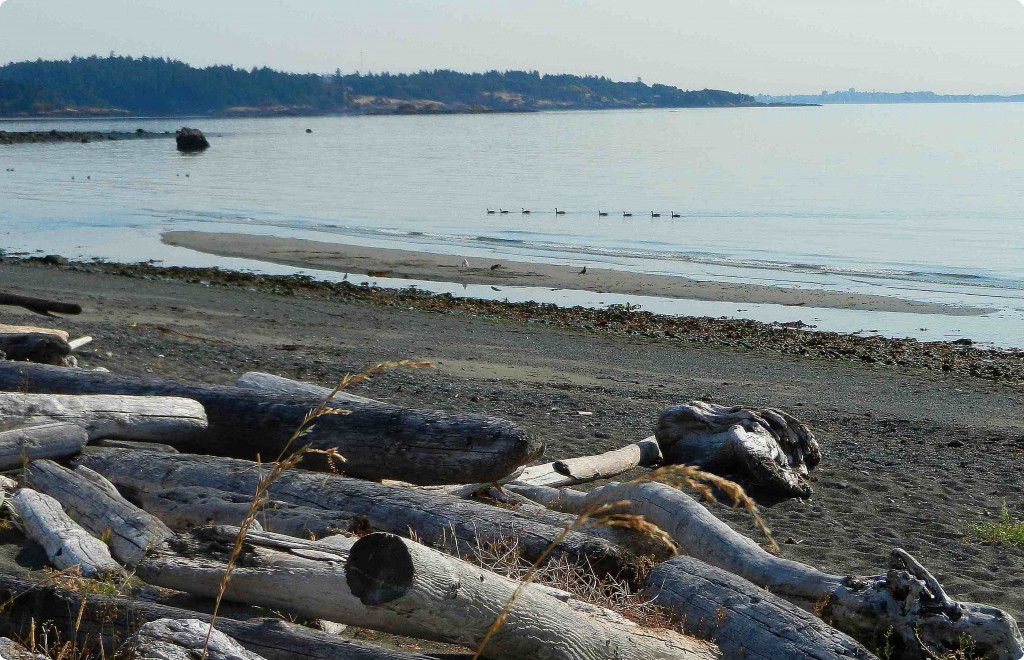
Sandbar at the North end of Taylor Beach
This morning with the extreme low tide, (tonight is the full moon) the small sandbar off the north end of Taylor beach was exposed for a few hours. As the tide came back in, a crow and a glaucous winged-gull were patrolling the area and picking up sandlance as they emerged from the sand, flipped around a few times and then died. In 15 minutes walking back and forth along the 40 metre stretch of the sandbar, I picked up 15 of the dead sandlance, forage fish. Several that were still active were returned to the water where they died within a few minutes. Perhaps this a solution– having direct predation as soon as they emerge from their sand burrows in order to prevent fouling of the beach..
Species recognized by IRMNG:
Kingdom: Animalia +
Phylum: Chordata
Class : Actinopterygii
Order: Perciformes
Family: Ammodytidae
Genus: Ammodytes Linnaeus, 1758
Species: personatus
